Rap fans tend to get into arguments with other rap fans, and it doesn't take much more than someone declaring their Favorite Rapper. Your favorite rapper is a personal preference, one that requires the most subjective defenses. If you’re rooting for the rookie of the year or a washed-up veteran experiencing a career resurgence or someone no one has heard of as your favorite, then so be it. The choice is yours.
The favorite rapper discussion is cool and all, but the coveted distinction in hip-hop is still being named the GOAT (Greatest of All Time). Rookies and new jacks need not apply—this debate is strictly for the catalog artists, people who have shifted the culture in previously unmovable ways, artists whose music has permeated and resonated over an extended period of time. It’s rap’s imaginary Hall of Fame, existing only within the abstract conversations we have about it.
But there is one debate that every rap fan not only loves to have but ought to have. A debate that considers both the short-term and long-term implications of an artist’s impact. A debate that pits a rapper in their prime against any and all competitors. A debate that gawks at the cultural landscape and plucks out the one who stands alone: the debate about who is the Best Rapper Alive. Being the BRA is sort of like being the MVP—even though rap doesn’t follow a rigid cultural calendar quite like major sports seasons—because it only requires looking at the current crop of active artists and picking a winner. You can confidently declare the Best Rapper Alive in any given year without having to consider previous decades, the same way you can say LeBron is an MVP even though you’ve never seen Jerry West play.
Anyone can become the Best Rapper Alive. Some came out the gate with next-level rhymes that had everyone running back to the lab; for others it was a culmination of their gifts that coalesced for one great year. Much like rap itself, it’s an evolving process. But one thing we know for sure, it’s more about a general feeling among fans rather than any discernible facts. (What facts? It’s all just opinion anyway.) When a rapper steps in front of a microphone, and everyone in hip-hop has no choice but to look their way and give props, well then, they just might be the Best Rapper Alive.
It’s still important to consider that the Best Rapper Alive debate is different from the GOAT conversation. Being the BRA doesn’t mean you’re the biggest or the most successful; it just means you're the Best at one particular moment. Of course in hip-hop, being the best is intrinsically about being BIG. And being at your best doesn’t make you the best, so if your prime coincides with someone else’s, well, hey, there’s always next year.
You can look back on the hip-hop terrain with 20/20 hindsight, tally up the votes, and declare the GOATs, but the Best Rapper Alive from year to year is a feeling in the moment. There have been debates among rap fans living in that moment since the early days of hip-hop, but those discussions have never been properly cataloged—until now! (Yeah, we're excited. Sue us.) Complex is proud to present the Best Rapper Alive, Every Year Since 1979, a comprehensive look back at every year of rap and which MC moved the crowd the most. So the question remains: Who got the props?
Illustrations by Dale Edwin Murray
1979: GRANDMASTER CAZ
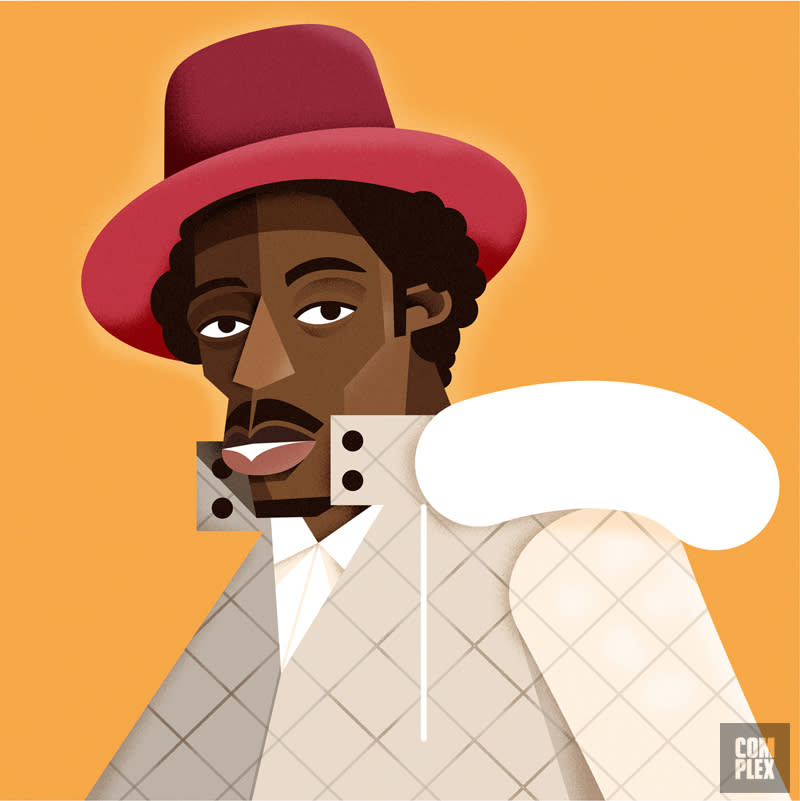
CREDENTIALS: The first person to DJ and rap simultaneously, raps were stolen for "Rapper's Delight"
After experiencing one of DJ Kool Herc's early hip-hop parties for the first time, Bronx-born Curtis Fisher got himself two turntables and a mic and adopted the name Casanova Fly. Hailed as the first to rap and DJ simultaneously, he earned the title Grandmaster Caz and became the standout member of the legendary Cold Crush Brothers, rocking countless park jams, recording singles for the Tuff City label, and battling the Fantastic Five in the seminal hip-hop movie Wild Style.
Yet despite all these accomplishments, Caz's biggest claim to fame is being the man whose lyrics were jacked by Big Bank Hank for the Sugarhill Gang's. —Rob Kenner
1980: KURTIS BLOW
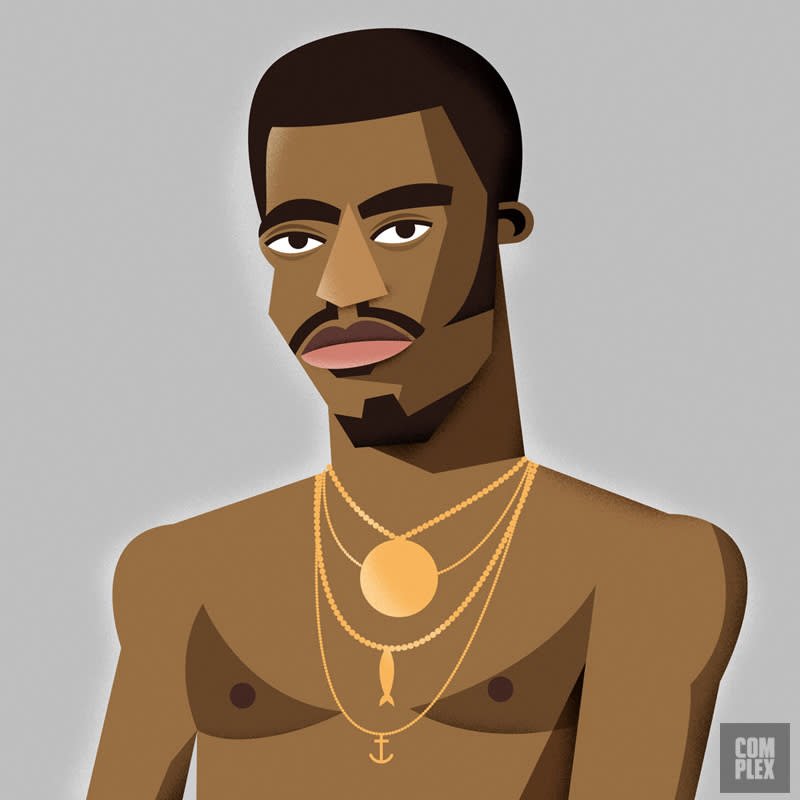
CREDENTIALS: "The Breaks"
In 1980 Kurtis Blow wasn't just the best rapper alive, he was the first rapper to show and prove that a career in rap was even possible. Blessed with a booming, elastic, singsong voice, he became the first MC to sign with a major label in 1979—hot on the heels of the "Rapper's Delight" phenomenon—and dropped the hit single "Christmas Rappin'."
He came right back with a self-titled debut album the following year, powered by "The Breaks," which became the first gold single in rap history. Blow's exuberant flow on the cut still thrills three decades later. He would continue to be a force in hip-hop, touring the world, producing, and acting, but this was the year when it first came together for him.
HONORABLE MENTIONS: Spoonie Gee, Kool Moe Dee, Jimmy Spicer
Harlem native Spoonie Gee's fresh rhymes on "Spoonin' Rap" contained the first references to jailhouse life in rap music, including the invaluable advice "Please my brother, don't drop the soap." As the standout member of the Treacherous Three, Kool Moe Dee distinguished himself on cuts like "Love Rap," "New Rap Language," and "Body Rock." Brooklyn rapper Jimmy Spicer's"Adventures of Super Rhyme (Rap)" gave him enough clout to become one of the first artists signed to Russell Simmons' Rush Management. Simmons would co-produce his future hits "The Bubble Bunch" and "Money (Dollar Bill Y'All)." —Rob Kenner
1981: KOOL MOE DEE
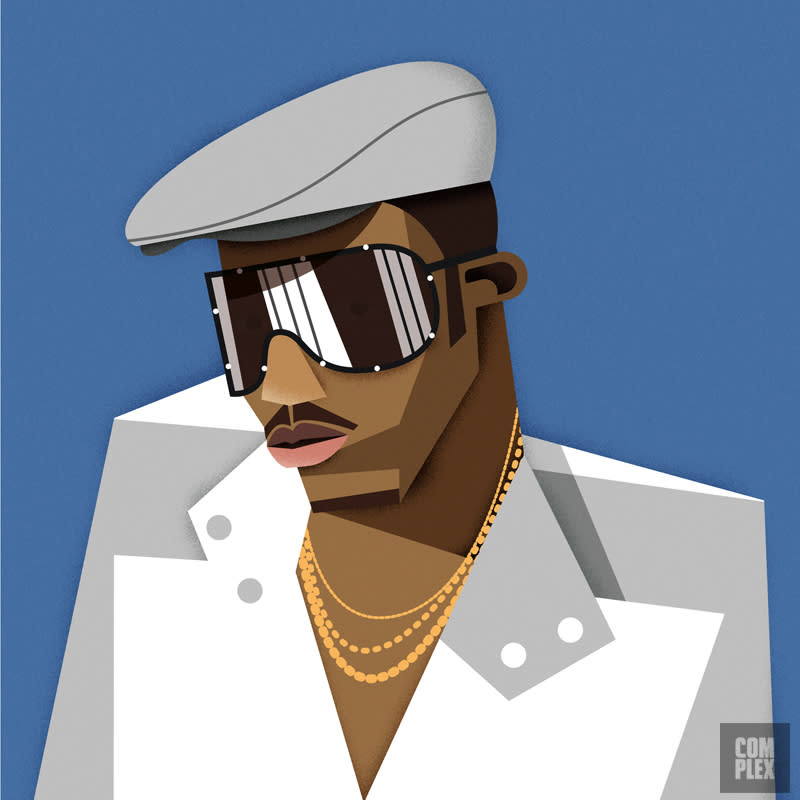
CREDENTIALS: Bodied Busy Bee at the Harlem World Christmas Rappers' Convention
Long before he became a solo star on the strength of Teddy Riley-produced joints like "Wild Wild West" and "How Ya Like Me Now," MC Kool Moe Dee was one third of the legendary Treacherous Three, along with Special K and LA Sunshine (not to mention DJ Easy Lee). Born Mohandas Dewese in Manhattan, Moe was a quiet character who channeled his passion into carefully crafted rhymes.
At age 19 he devastated the renowned party rapper Busy Bee Starski at the Harlem World Christmas Rappers' Convention in a performance that is often cited as the first hip-hop battle. The relentless routine opened with "Come on Busy Bee I don't mean to be bold/But put that bom-ditty-bom bullshit on hold." Things only went downhill from there as Moe Dee clowned Busy's formulaic rhymes and served notice that from this moment forward MCs would have to step up their lyrical game.
1981 also saw the Treacherous Three drop hits like "Feel the Heartbeat" and "Put the Boogie in Your Body," marking a creative apogee for the trio. Although the group broke up after appearing in the 1984 movie Beat Street, Kool Moe Dee's career endured until the early '90s, and he never lost his taste for battling. His long-running feud with LL Cool J inspired some memorable lyrical exchanges.
HONORABLE MENTIONS: Love Bug Starski, T Ski Valley, Sha-Rock
When he wasn't spinning records at Harlem's Rooftop Roller Rink, Lovebug was laying down raps. His record "Positive Life" with the Harlem World Crew set him head and shoulders above all comp not named Kool Moe Dee. T Ski Valley got his start DJing with the Erotic Brothers Disco and eventually became an MC; his classic 1981 single "Catch the Beat" can still rock any party. Sha-Rock was the not-so-secret weapon of the Funky 4 + 1. Every time she rocked the mic, the feisty Bronx MC outshone her male counterparts. —Rob Kenner
1982: MELLE MEL
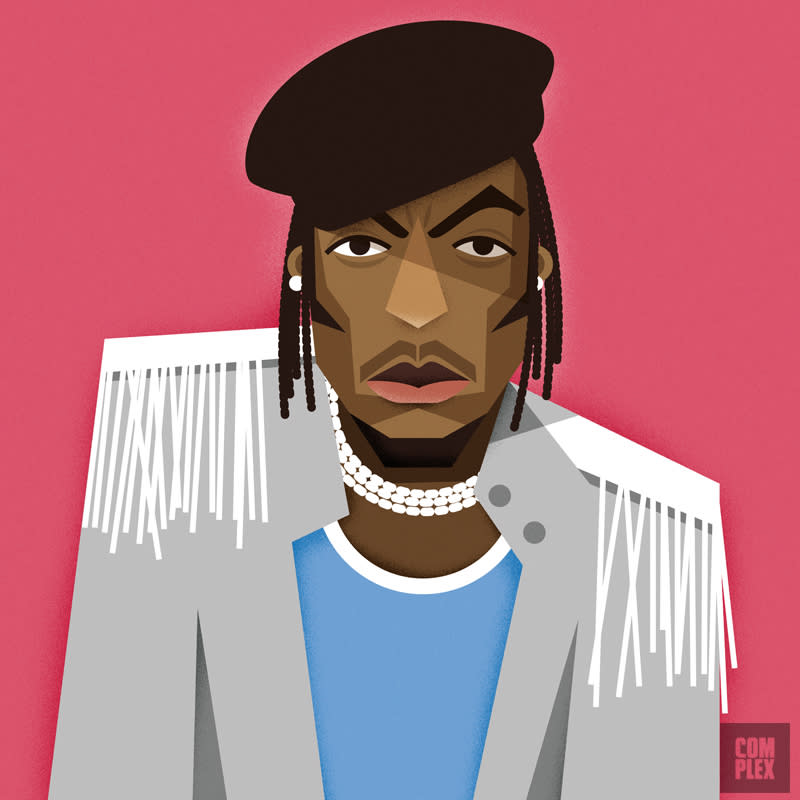
CREDENTIALS: "The Message"
If you see modern-day Melle Mel out in New York City rocking a powder blue tuxedo with long tails and calling himself "Muscle Simmons," you might not suspect that this is the same dude who rhymed the immortal words "Don't push me, 'cause I'm close to the edge." Back in 1982 Mel was a member of the Furious Five along with his brother Kidd Creole (Nathaniel Glover), Scorpio (Eddie Morris), Rahiem (Guy Todd Williams), and Cowboy (Keith Wiggins).
When they weren't ripping park jams and rec centers with DJ Grandmaster Flash, they were dropping hit records like "Super Rappin,'" "The Birthday Party," and "It's Nasty (Genius of Love)" for labels like Enjoy and Sugar Hill Records. But when Melle Mel turned his attention to the realities of life in the Bronx during the Reagan era, he created a groundbreaking hip-hop classic called "The Message."
HONORABLE MENTIONS: Kool Moe Dee, Grandmaster Caz, T Ski Valley
Kool Moe Dee's rhymes on the Treacherous Three's "Yes We Can Can" proved that he was still not the one to fuck with. Grandmaster Caz caught wreck on the Cold Crush Brothers joint"Weekend," and T Ski Valley took it back to his Erotic Brothers Disco days on the NSFW "Sexual Rapping." —Rob Kenner
1983: RUN
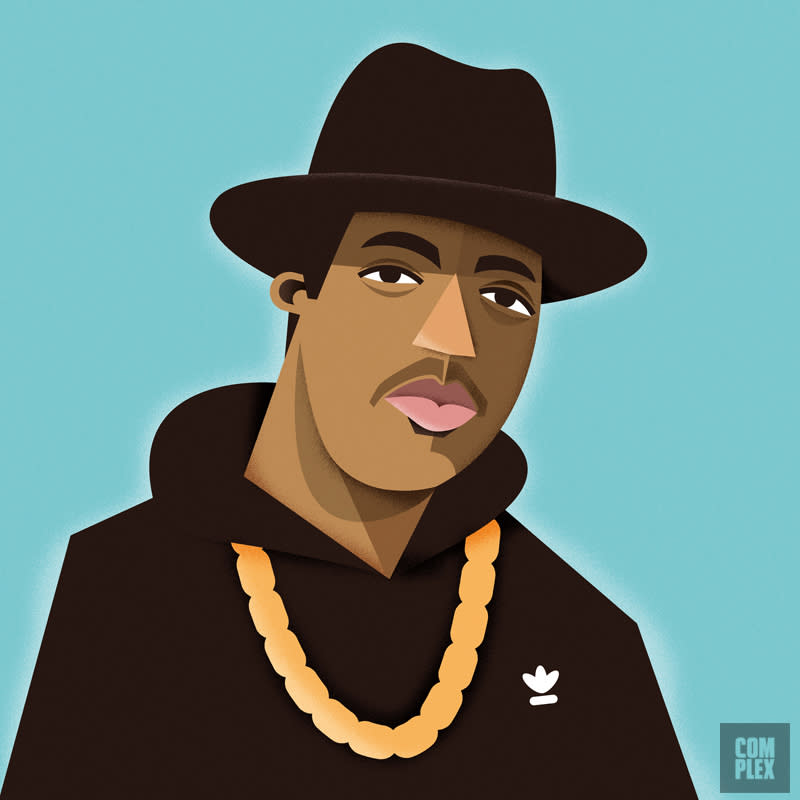
CREDENTIALS: "It's Like That" / "Sucker MCs"
It's difficult to overstate the impact of Run-DMC on the trajectory of hip-hop. Put it like this: The release of the 12-inch single "It's Like That" / "Sucker MCs" on Profile Records completely changed the game. The A side picked up where "The Message" left off, talking about real life struggles of real people. But where Grandmaster Flash and the Furious Five's story ended in tragedy, with a body used and abused and hanging dead in a cell—the artists themselves being harassed by cops—"It's Like That" was defiant and resilient.
War, crime, poverty, prejudice, ignorance, the bum eating out of a garbage can who once was your man? Run's response was as cold and hard as the streets of Hollis, Queens: "Don't ask me because I don't know why." And what about a solution? "Money is the key to end all your woes your ups your downs your highs and your lows/Won't you tell me last time love bought your clothes?"
These words defined rap's new world order, a cold hard cash philosophy that would prevail through Puffy's "All About the Benjamins" moment and remains unabated in this era of Young Money Cash Money Business. But Run-DMC also tempered this approach with advice to get educated, motivated, and avoid prejudice and bias. These were big ideas for a rap record, but side B of this epic single was arguably more significant.
"Sucker MCs (Krush Groove 1)" was a stylistic broadside against all forms of wackness. "Two years ago a friend of mine asked me to say some MC rhymes," Joseph "Run" Simmons intoned and suddenly the entire old school was swept away. Before long he was enjoying "Champagne, caviar, and bubble bath" even though he'd prefer to "Cold chill at a party in a B-boy stance." Run dispensed with all sucker MCs remorselessly: "So take that and move back catch a heart attack." And while Darryl "DMC" McDaniels and Jason "Jam Master Jay" Mizell were indisputably dope, there was also no disputing the fact that at the end of the day this was Run's house.
HONORABLE MENTIONS: Melle Mel, Jimmy Spicer, Rammellzee
Call him old school if you must, but Melle Mel was still handling his business in '83. The Furious Five's "New York New York" was a streetwise classic while "White Lines" remains the group's most modern-sounding record. Spitting cautionary tales of cocaine addiction over the beat from Liquid Liquid's "Cavern," Mel's booming baritone made a powerful case for his continued relevance.
Meanwhile, as Run-DMC proclaimed the cash money gospel, another Rush Management client, BK's own Jimmy Spicer rapped about the power of "Money (Dollar Bill Y'all)" and scored the biggest hit of his career, as well as one of the year's freshest records.
Rammellzee was more of a graf legend than an MC, but in 1983 he and K-Rob created "the holy grail of rap records." Rammellzee had a bone to pick with Jean-Michel Basquiat, who was a much more celebrated artist at the time. "Beat Bop" was originally planned to be cathartic a battle on wax, but in the end Basquiat did not rhyme on the record (although he did pay for the studio time and created the cover art). The far-out limited-edition single became an underground sensation and set the stage for the futuristic avant-garde expressions of hip-hop artists ranging from the Beastie Boys to Dr Octagon and MF Doom. —Rob Kenner
1984: RUN
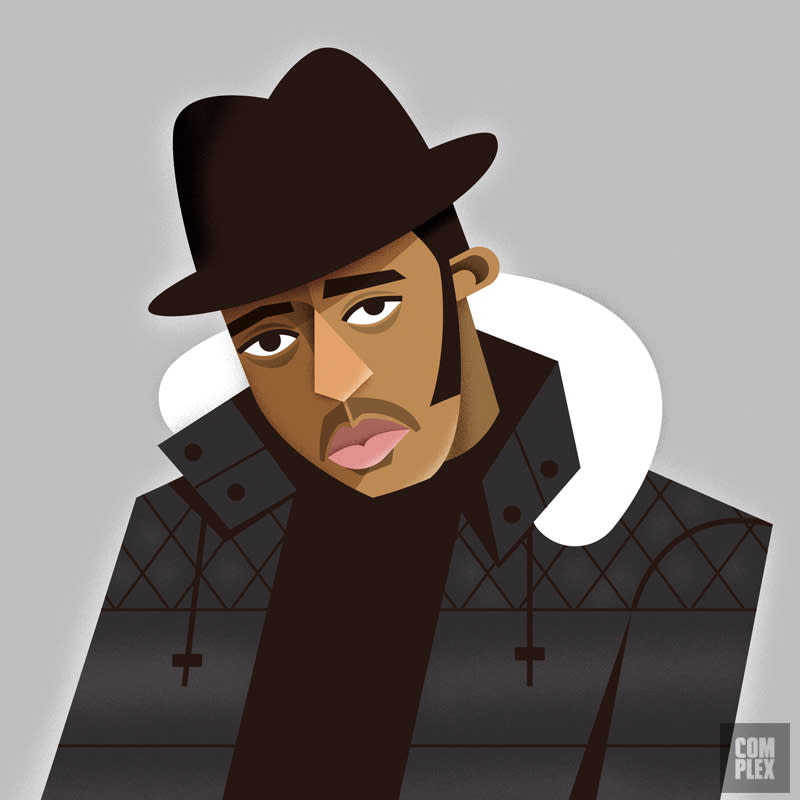
CREDENTIALS: Run-DMC
If the "It's Like That" / "Sucker MCs" single was the warning shot, the release of Run-DMC's self-titled debut album emptied the full clip. The nine-track tour de force announced that these three teenagers from Hollis, Queens, were rewriting the rules of the rap game, stripping the music down to its elements: a pair of MCs who worked in perfect synch with one untouchable DJ.
Joseph "Run" Simmons got his start in hip-hop DJing for Kurtis Blow. He got the gig thanks to his older brother Russell, who managed Blow. Known as DJ Run, "Kurtis Blow's Disco Son,” Run began to MC and honed his skills by battling with Blow. He would sometimes record the sessions and send them to his friend Darryl "DMC" McDaniels. Run later emerged as the leader of the group, although what made Run-DMC work was the way they all gelled into a whole that was greater than the sum of its parts.
There were no outlandish get-ups or gimmicky routines, just rock hard beats (courtesy of Russell Simmons and Larry Smith, with electric guitars by Eddie Martinez) and rhymes that spoke clearly and distinctly about real life in a way that the new generation of rap fans had never heard blasting out of their radios before.
With their black Lee jeans and matching jackets, unlaced adidas sneakers, and zero-fucks-given body language, Run-DMC looked as if they had just rolled off Linden Boulevard. No matter how successful they got, they never lost that attitude, taking it with them as they stepped on stages and broke down barriers for hip-hop culture all around the world.
Run put it best in “Rock Box,” which became the first rap video to air on MTV, “My name is Joseph Simmons, but my middle name's Lord/And when I'm rockin' on the mic, you should all applaud.”
HONORABLE MENTIONS: LL Cool J, Kurtis Blow, Roxanne Shante
When James Todd Smith said "I Need a Beat" anybody with ears could tell he meant business. This ground-breaking 12" single on Def Jam Records, produced by NYU student Rick Rubin, announced the arrival of an urgent 16-year-old voice that would soon take over. Kurtis Blow was a veteran by this time, but singles like "8 Million Stories" proved that he was still very much a force to be reckoned with. And 15-year-old Lolita Shante Gooding from the Queensbridge projects caught the whole rap world napping with "Roxanne's Revenge," her freestyled response to UTFO's "Roxanne Roxanne." Her song brought battle rap to the radio, set new standards for female MCs, and set off a whole chapter of hip-hop history known as the "Roxanne Wars." —Rob Kenner
1985: LL COOL J
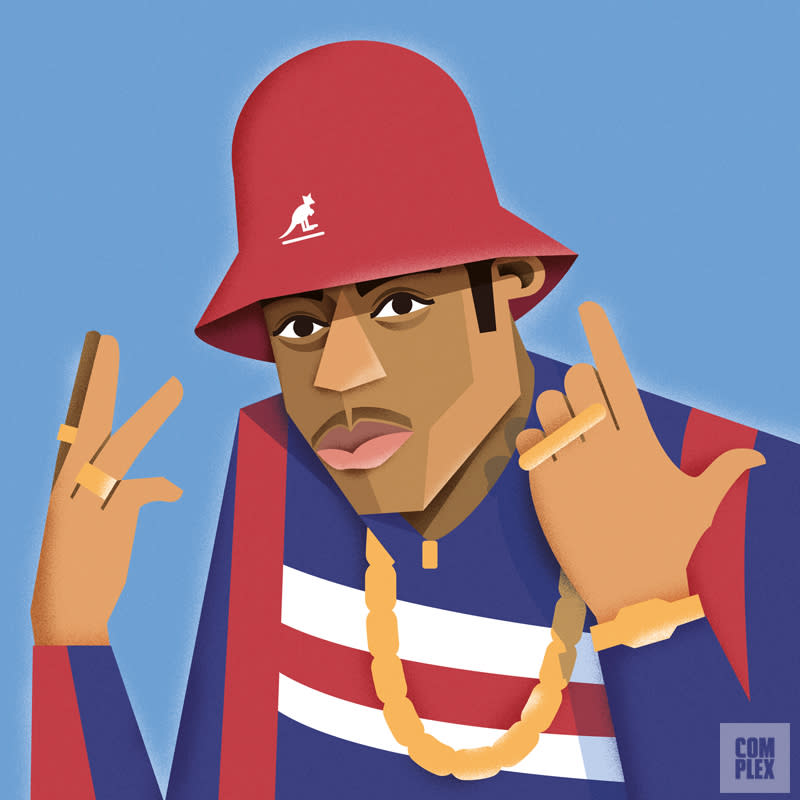
CREDENTIALS: Radio
Def Jam’s first hip-hop superstar was a charismatic 17-year-old from Queens named James Todd Smith, better known as LL Cool J (shorthand for Ladies Love Cool James.) Ladies might have dug his debut album, Radio—it was an instant success, both critically and commercially, eventually selling well over a million copies—but at this stage his music was aimed mostly at a male audience. “LL Cool J is hard as hell,” he roared on “Rock the Bells,” adding (over Rick Rubin’s obnoxiously abrasive beat) that he’d “battle anybody I don’t care who you tell.” This was no idle boast, as he would engage in a long-running war of words with Kool Moe Dee, among others. Double L's was the most urgent and authentic voice in hip-hop that year. Whatever his rhymes may have lacked in complexity they more than made up for with heaping portions of b-boy bravado.
A careful listen to the album’s title cut reveals that it’s about much more than just bigging up boom boxes. The song’s narrator starts out as a youth who enjoys the simple pleasure of “Walking down the street to a hardcore beat/While my JVC vibrates the concrete.” You’ve got to admire the kid’s spirit as he runs from the subway cops to avoid a summons and purchases fresh batteries when his tape will no longer rewind. We learn that his story is tough, his neighborhood is rough, yet he still sports gold and he’s “out to crush.”
Later on in this semi-autobiographical tune, LL makes the jump from fandom to fame, becoming the artist whose voice booms through the radio. His days of pounding the pavement are over as we see him riding in a Cadillac with the system kickin’ way past 10. “I drive up the Ave with my windows closed, and my bass is so loud it could rip your clothes.” By the next verse of this raps to riches story, he’s cold getting paid “Cause Rick said so.” When LL said “I’m the leader of the show, keeping you on the go” you’d best believe it, because in 1985 no rap fan could live without LL on their radio.
HONORABLE MENTIONS: Run, Beastie Boys, Slick Rick
The title of Run-DMC’s sophomore LP, King of Rock, revealed this Queens trio’s grand ambitions. They dared to compare rap, an upstart ghetto music that many dismissed as a novelty or worse, with the exalted pop culture phenom that was rock and roll circa 1985. (At the same time they were reaching out to other subgenres, as on “Roots Rap Reggae,” featuring Jamaican dancehall star Yellowman.)
Meanwhile the Beastie Boys were starting to build momentum on the strength of 12" singles like“Rock Hard” and “She’s on It.” Although the group’s breakthrough release “Hold It Now, Hit It”would not drop until the following year, their infectiously anarchic energy was winning new fans every day, and while the trio’s chemistry made them inseparable, Adam "MCA" Yauch was emerging as the group's standout MC.
Slick Rick was going by the name MC Ricky D when he joined forces with human beatbox Doug E. Fresh on a madcap live recording called “La-Di-Da-Di,” which was released on the flip side of a single called “The Show.” The record went on to become one of the most sampled in rap history, establishing Rick as a phenomenal lyricist who would neither cause trouble nor bother anybody. He and Doug were “just some men that’s on the mic,” but as the song both showed and proved, “when we rock the microphone we rock the mic right.” —Rob Kenner
1986: KRS-ONE

CREDENTIALS: "South Bronx"
What MC wouldn’t want to be dubbed the “Best Rapper Alive”? But pinning that title on Kris Parker, a.k.a. KRS-One (an acronym for Knowledge Reigns Supreme Over Nearly Everyone), seems like damning him with faint praise. KRS was never just a rapper—right from the start he was a renegade teacher and scholar, a satirist, polemicist, and most of all, the Blastmaster. As such, his lyrics were tools of war, which he kept sharpened to a lethal edge.
KRS was living at a Bronx homeless shelter when he met Scott Sterling, a.k.a. DJ Scott LaRock, who worked there as a counselor. KRS was also an MC and graf writer known for battling other residents at the shelter. Scott was so sufficiently impressed that he would slide the 20-year-old passes that allowed him to go out and catch live rap shows from time to time. Before they collaborated on their monumental 1987 debut album, Criminal Minded, with beats supervised by Ced Gee of Ultramagnetic MCs, KRS and Scott LaRock dropped a 12” single called “South Bronx” (“Fresh for '86, you suckers!”). This song was provocative enough to set off an epic inter-borough musical conflict known as “The Bridge Wars,” and also set KRS above and beyond all lyrical competition in that particular year.
It all started with MC Shan’s song “The Bridge,” which big upped the borough of Queens, specifically the Queensbridge housing projects. Filled with local pride, Shan asserted that the Bridge played a vital role in the birth and evolution of hip-hop—and he had a point, since it was home to Marley Marl and the mighty Juice Crew. Nevertheless, the song provoked KRS, who proudly repped for the Bronx in a hip-hop masterpiece set to a shrill, staccato beat and raps that hit home like blunt force trauma. “Party people in the place to be KRS-One attacks…” he rhymed in the first verse before going in for the kill: “So you think that hip-hop got its start out in Queensbridge?/If you popped that junk up in the Bronx you might not live.”
Vacillating between Blastmaster and teacher mode, KRS worked a lengthy hip-hop history lesson into the second verse, shouting out such luminaries as Kool Herc, Afrika Bambaataa, and Grandmaster Flash—among others—and evoking memories of jams in Cedar Park and Bronx River where the amps were powered by electricity jacked from lamp posts. But before long KRS brought it back to the battle. “As odd as it looked, as wild as it seemed/I didn’t hear a peep from a place called Queens.”
Shan had no choice but to respond to KRS’s devastating attack, releasing a song called “Kill That Noise,” but he was only falling further into BDP’s trap. Soon thereafter Scott and Kris returned fire with a reggae-flavored war chant called “The Bridge Is Over” that was an undisputed lyrical TKO. KRS remains a hip-hop icon to this day, but in 1986 there was simply no denying the fact that he was the best rapper alive.
HONORABLE MENTIONS: Run, Too $hort, Schoolly D
The mighty Run-DMC movement continued unabated with the Queens trio’s third and best-selling album, Raising Hell, which contained “Walk This Way,” a historic collaboration with the rock band Aerosmith. At the end of the day Run’s raps still led the way.
After flooding the streets of Oakland with singles on the independent 75 Girls label, Too $hort inked a deal with Jive Records and released Born to Mack, which was eventually certified gold, proving that regional pimp rap could move big numbers nationwide. (Jive elected to leave its logo off the album for years. See industry Rule #4080.)
Meanwhile in Philadelphia Schoolly D revealed a whole new world with a sinister jam called “PSK What Does It Mean?” (dedicated to Philly’s Park Side Killers) released on a 12" backed with“Gucci Time.” Though “gangsta rap” is usually considered a West Coast thing, Schoolly’s pioneering crime narratives developed in parallel with BDP’s, proving that brothers were getting paid by all means necessary all over the country. —Rob Kenner
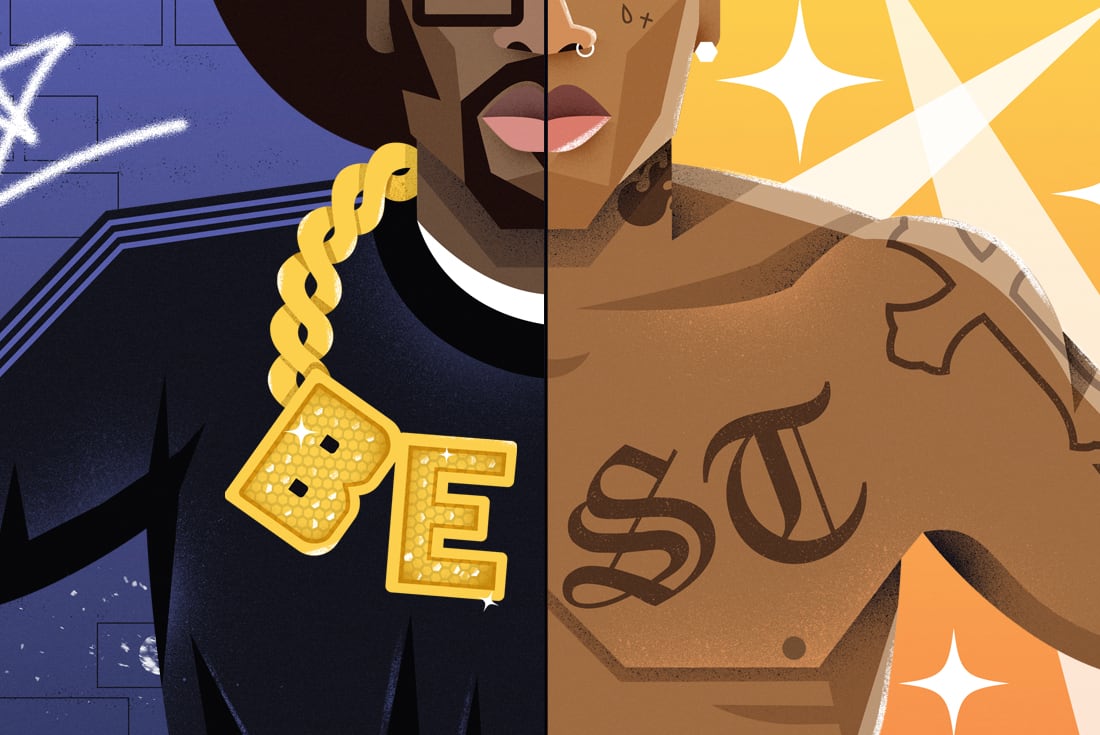
You need to be a member of NASTYMIXX to add comments!
Join NASTYMIXX